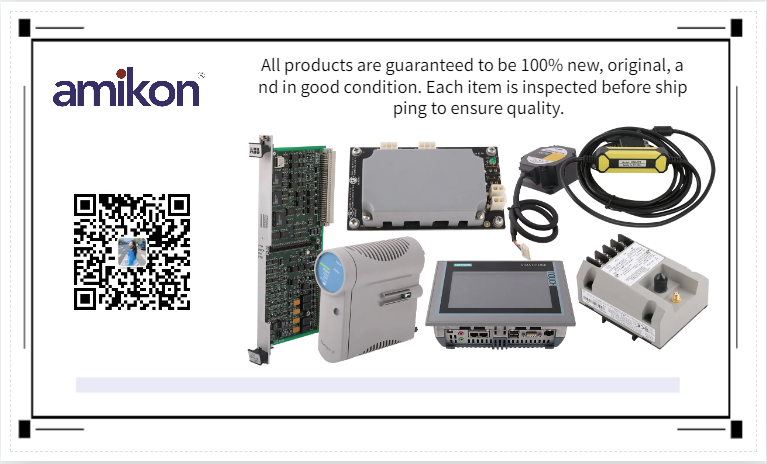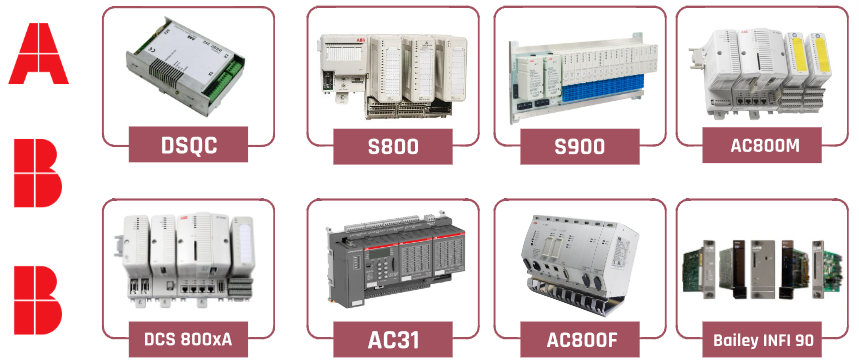Introduction
In today's fast-paced industrial world, efficiency, safety, and reliability are paramount. Key components from leading manufacturers such as ABB, Bently Nevada, General Electric, Honeywell, and Schneider Electric play a significant role in ensuring that industrial automation and monitoring systems function seamlessly. In this blog, we will delve into the features, applications, and benefits of five critical components:
ABB 3BHE012276R0102 Control Board
The ABB 3BHE012276R0102 Control Board is a critical component in ABB's portfolio of automation products, playing a pivotal role in controlling and regulating complex processes in industrial settings.
Key Features:
Advanced Control Capabilities: The control board provides precise regulation of industrial systems, ensuring accurate control of processes such as machinery, production lines, and automated systems.
Integration: Seamlessly integrates with ABB’s wider control system infrastructure, providing reliable communication with other components.
Reliability: Designed for high-stress industrial environments, the board ensures operational continuity even under harsh conditions.
Applications:
The 3BHE012276R0102 Control Board is used in various industries such as manufacturing, energy, and power generation. It is particularly valuable in ensuring optimized control of machinery, helping to reduce downtime and improve operational efficiency.
Bently Nevada 3500/63 Gas Detection Monitor
The Bently Nevada 3500/63 Gas Detection Monitor is a vital component for monitoring and detecting the presence of dangerous gases in industrial environments, offering an additional layer of safety in hazardous operations.
Key Features:
High-Sensitivity Gas Detection: Capable of detecting a wide range of gases, ensuring that even the smallest leak is identified in real-time.
Integration with 3500 Monitoring System: The monitor is part of the Bently Nevada 3500 system, which is widely known for its vibration and condition monitoring capabilities. This makes it ideal for critical machinery and industrial environments.
Alarm System: Includes an alarm and alert system that immediately notifies operators in case of dangerous gas levels, preventing accidents and ensuring safety.
Applications:
The 3500/63 Gas Detection Monitor is commonly used in industries such as oil and gas, chemical processing, and power generation, where the detection of toxic or combustible gases is crucial for the safety of personnel and equipment.
General Electric IS200TVBAH2A Vibration Input Terminal Board
The General Electric IS200TVBAH2A Vibration Input Terminal Board plays a critical role in monitoring machinery health by collecting vibration data from various industrial equipment.
Key Features:
Vibration Monitoring: This board captures and processes vibration data, which can then be analyzed to determine the health of rotating machinery like turbines, pumps, and compressors.
Multiple Input Channels: It supports multiple channels for vibration input, making it versatile for large-scale industrial monitoring systems.
Durability: Designed to withstand industrial environments, the IS200TVBAH2A operates effectively in conditions of high vibration, heat, and electrical noise.
Applications:
The IS200TVBAH2A is primarily used in power plants, oil and gas facilities, and manufacturing environments where predictive maintenance and machinery health monitoring are essential to prevent costly breakdowns.
Honeywell MU-PPIX02 Pulse Input Module
The Honeywell MU-PPIX02 Pulse Input Module is an advanced input device used for counting and measuring pulses generated by flow meters, speed sensors, and other pulse-generating devices in industrial processes.
Key Features:
Precision Pulse Measurement: It provides accurate and reliable pulse counting, which is crucial for monitoring the speed and flow rate of industrial processes.
Wide Range of Input Types: The module supports multiple input types, offering flexibility across various applications.
Scalability: It can be integrated into larger process control systems, making it ideal for industries that require extensive monitoring and data acquisition.
Applications:
The MU-PPIX02 Pulse Input Module is widely used in industries such as water treatment, chemical manufacturing, and oil and gas. Its ability to measure flow rates and speeds accurately makes it a key component for maintaining efficient operations and ensuring process accuracy.
Schneider Electric 140SDI95300S Modicon Safety DC Discrete Input Module
The Schneider Electric 140SDI95300S Modicon Safety DC Discrete Input Module is a highly specialized safety input module designed to ensure safe and reliable monitoring of industrial processes.
Key Features:
Safety-Critical Monitoring: It meets strict safety requirements, ensuring that all monitored inputs are accurately reported and any anomalies trigger the appropriate safety measures.
Discrete Input Handling: The module is capable of handling discrete input signals such as on/off switches, sensors, and other binary signals that require safety monitoring.
Integration with Modicon Systems: This module integrates seamlessly with Modicon safety systems, providing an added layer of protection to industrial automation processes.
Applications:
The 140SDI95300S is used in industries where safety is paramount, including manufacturing, automotive, and critical infrastructure. It is typically deployed in situations where the monitoring of emergency stops, door interlocks, or other safety-critical operations is essential.

Conclusion
Each of these components from ABB, Bently Nevada, General Electric, Honeywell, and Schneider Electric serves a specific purpose in enhancing industrial automation, safety, and monitoring. From vibration input boards and gas detection monitors to pulse input modules and safety input systems, these products help ensure that industrial operations run smoothly, efficiently, and with the highest level of safety.
In an age where downtime can cost industries millions, and safety regulations are increasingly stringent, investing in reliable components like these can significantly boost operational efficiency while ensuring compliance with safety standards. By leveraging cutting-edge technology from industry leaders, companies can stay competitive, optimize their processes, and create safer working environments for their employees.
These components represent the forefront of innovation in industrial automation and are essential for any business looking to improve its process control, system reliability, and safety measures.
Contact us Anytime when you need!
➪ Leonia
✉ sales11@amikon.cn
☏ +8618030175807(Whatsapp)





